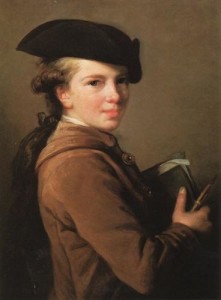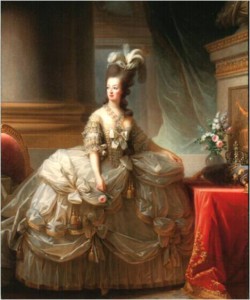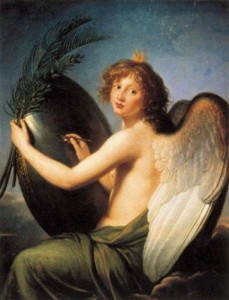Born April 16, 1755 in Paris, France; Died March 30, 1842 in Paris
Self Portrait, 1790
Marie-Louise-Élisabeth Vigée-LeBrun had a career as lengthy and rich as her complicated name suggests. Born to an artist father (which is a common trend I’m noticing amongst the women I research), Vigée-LeBrun was introduced to painting at a young age. Her early pieces, mainly portraiture, received praise from notable artists of the time, and by age 15 she had already amassed a large following and fair amount of wealth.
The Artist’s Brother, 1773
In 1776, Vigée-LeBrun married artist Jean Baptiste LeBrun, who was more notable as an art dealer and collector. He helped Élisabeth Louise to further solidify her reputation as a serious artist. Many aristocrats of the time enjoyed the young artist’s fresh style and vivid colors, and her ability to “[depict] her sitters in a flattering manner, posed gracefully and wearing their most stylish clothing.” In 1779, Vigée-LeBrun received the greatest break of her career when Marie Antoinette, the current queen of France, requested she paint a portrait of her. The artist arrived in Versailles, where she began a lasting friendship with Antoinette (who is so fascinating in her own right), eventually creating upwards of 30 portraits of the Queen. Antoinette also helped Vigée-LeBrun to be inducted into the very prestigious Paris Royal Academy of the arts, where she was one of only four women. Her acceptance into the Academy, unsurprisingly, created controversy amongst the male-dominated membership of the time.
Marie Antoinette, 1779 Marie Antoinette with Children, 1788
The picture on the left is one of Vigée-LeBrun first portraits of Queen Antoinette, depicting her in a lavish, detailed outfit, holding a small pink rose. This image is one of pure femininity, and I think her position as a female painter made it easier for Vigée-LeBrun to accurately capture the stunning nature of the queen. The portrait on the right features the queen in a striking, but yet more subdued, dress, caring for her young children. I think these two portraits show a slight evolution in Vigée-LeBrun’s style, but more interestingly, the path that Antoinette’s life took over the course of ten years. This painting was also the last portrait she made of her. Those of you who know a bit about the history of the time period know that this was merely years before Antoinette’s execution and the decline of the French monarchy.
Vigée-LeBrun accurately perceived that a revolution was about to take place, and knew her role as an artist and friend of the royal family would not be highly favored. Taking her 9 year old daughter with her, Vigée-LeBrun fled France in 1789, traveling across Europe. She was met with open arms from other royalty and aristocrats in countries like Italy and Switzerland. The displaced artists eventually settled in Russia, where she remained for several years before returning to France permanently in 1805.
The Genius of Alexander
I included this painting because it shows Vigée-LeBrun’s shift from painting primarily portraits to creating mythological scenes in her later life.
What I find so interesting about Louise Vigée-LeBrun is that she really didn’t let being a woman during this time period impede her success. Although it seems that she largely painted women, and had a large female fanbase (like Marie Antoinette), the accounts I’ve read say that she was appreciated by all– her talent was, after all, very obvious. Vigée-LeBrun was confident in not only her work as an artist, but also herself. She published three volumes of memoirs toward the end of her life, claiming that she painted almost 900 paintings (many of which have since been lost to history.) She lived a fascinating life, during a time period of rapid change. As writer Nancy Heller remarked, her most successful portraits “vividly preserve a way of life that was fading even as she painted it.” Her position as a woman makes her portrayals of the time even more unique.
URLS:
http://www.biography.com/people/elisabeth-vig%C3%A9e-le-brun-37280#later-life
http://nmwa.org/explore/artist-profiles/%C3%A9lisabeth-louise-vig%C3%A9e-lebrun
http://www.britannica.com/biography/Elisabeth-Vigee-Lebrun
http://www.encyclopedia.com/topic/Elisabeth_Vigee-Lebrun.aspx





